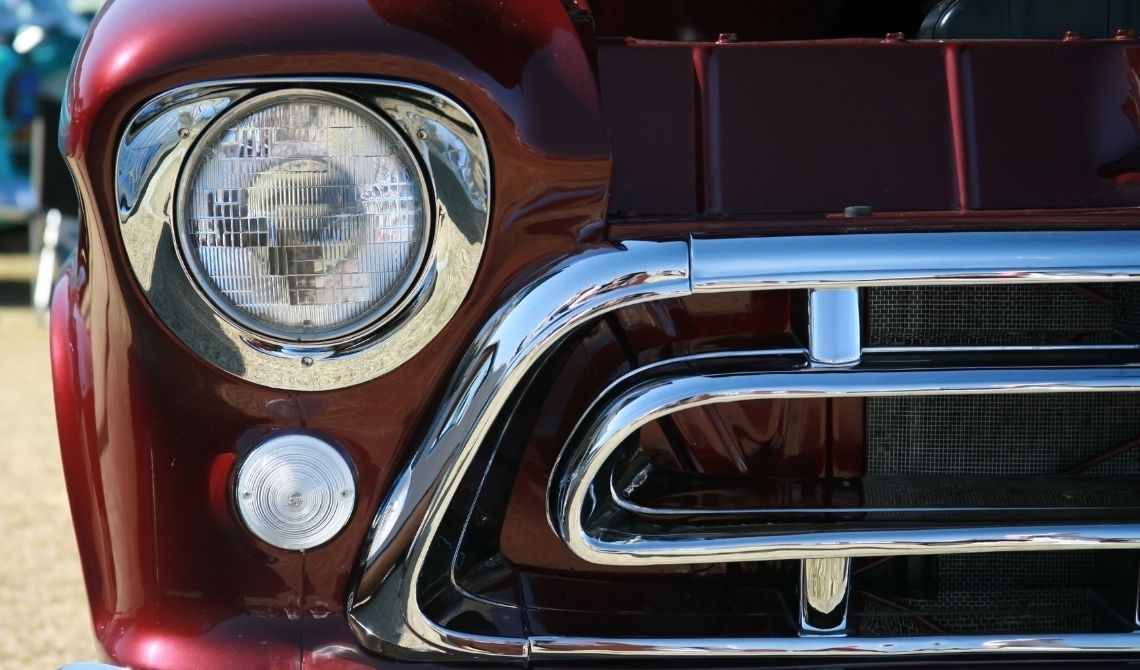Illuminate the Road A Guide to Enhancing Safety and Visibility with Truck Headlights Solutions
Introduction to Truck Headlights Safety
Truck headlights serve as the frontline defense for drivers navigating the highways and byways, especially during low light conditions or inclement weather. These crucial components not only illuminate the path ahead but also play a pivotal role in ensuring the safety of both truckers and other road users. In this chapter, we delve into the fundamental importance of truck headlights safety and explore the various factors influencing visibility on the road.
Visibility is a cornerstone of safe driving, and adequate lighting is indispensable for maintaining it. Poor visibility can lead to accidents, collisions, and even fatalities, making it imperative for truck drivers to prioritize the condition and efficiency of their headlights. Factors such as weather conditions, road infrastructure, and the design of the vehicle itself can significantly impact visibility, underlining the necessity of reliable and effective lighting solutions.
As we embark on this journey to unravel the complexities of truck headlights safety, it becomes evident that these components are more than just accessories—they are lifelines on the road. By understanding the pivotal role they play and the challenges they face, drivers can equip themselves with the knowledge and tools necessary to navigate safely through any environment. Join us as we shine a light on the critical aspects of truck headlights safety and explore solutions to enhance visibility and ensure safer travels for all.
Understanding Headlight Types
Headlights are not created equal, and understanding the different types available is essential for truck drivers aiming to optimize safety and visibility on the road. In this chapter, we delve into the diverse landscape of truck headlights, exploring the pros and cons of each type and providing insights to help drivers make informed decisions.
Halogen headlights, a common staple in many vehicles, offer affordability and simplicity. However, they are often outshined by newer technologies in terms of brightness and longevity. LED headlights, on the other hand, have emerged as a leading choice for drivers seeking superior illumination and energy efficiency. With their bright, white light and extended lifespan, LED headlights provide enhanced visibility without draining the vehicle’s battery.
HID (High-Intensity Discharge) headlights occupy a middle ground between halogen and LED, offering brighter light output than halogen bulbs but not quite matching the efficiency and longevity of LEDs. While they provide excellent visibility, HID headlights can be more expensive to replace and may require additional components for proper installation.
Each type of headlight comes with its own set of advantages and drawbacks, making it crucial for truck drivers to weigh their options carefully. Factors such as brightness, energy efficiency, and long-term cost should all be considered when selecting the most suitable headlights for a truck. By understanding the nuances of each type, drivers can make informed choices that prioritize safety and optimize visibility on the road.
The Importance of Proper Alignment
Headlight alignment plays a critical role in ensuring optimal visibility and safety on the road. In this chapter, we explore the significance of maintaining proper alignment for truck headlights and provide guidance on how drivers can achieve and maintain it.
Misaligned headlights can significantly compromise visibility, potentially causing dangerous situations for both the driver and other road users. Common issues resulting from misalignment include reduced illumination distance, uneven lighting patterns, and glare that can blind oncoming traffic. Regularly checking and adjusting headlight alignment is therefore essential for minimizing these risks and ensuring consistent visibility in various driving conditions.
Several factors can contribute to headlight misalignment, including vehicle vibrations, improper installation, and collisions. As such, drivers should proactively inspect their headlights and address any alignment issues promptly. Simple tools like alignment charts or professional assistance from mechanics can help ensure that headlights are correctly aligned according to manufacturer specifications.
By prioritizing proper alignment, truck drivers can maximize the effectiveness of their headlights and enhance safety on the road. Regular maintenance and adjustment of headlight alignment should be integral components of every driver’s routine vehicle care regimen, contributing to a safer driving experience for all.
Choosing the Right Bulbs
Selecting the appropriate bulbs for truck headlights is crucial for ensuring optimal visibility and safety on the road. In this chapter, we explore the factors to consider when choosing bulbs and provide guidance to help truck drivers make informed decisions.
Brightness is a key consideration when selecting bulbs for headlights. Bulbs with higher lumens output can provide greater visibility, especially in low-light conditions. Additionally, drivers should consider the color temperature of the bulbs, as warmer temperatures may offer better visibility in certain weather conditions.
Energy efficiency is another important factor to consider. LED bulbs, for example, are known for their energy efficiency and can help reduce the strain on a truck’s electrical system. Longevity is also a consideration, as bulbs that last longer can reduce the frequency of replacements and maintenance.
Durability is paramount, particularly for trucks that frequently traverse rough terrain or encounter harsh weather conditions. Opting for bulbs that are resistant to vibration and moisture can help ensure consistent performance and longevity.
Lastly, drivers should prioritize purchasing bulbs from reputable manufacturers to ensure quality and reliability. Investing in high-quality bulbs may come with a higher upfront cost but can ultimately save money in the long run by reducing the need for frequent replacements and maintenance.
By considering factors such as brightness, energy efficiency, longevity, durability, and brand reputation, truck drivers can select the right bulbs to optimize visibility and safety on the road.
Upgrading to LED Headlights
Upgrading to LED headlights presents a compelling opportunity for truck drivers to enhance visibility, efficiency, and safety on the road. In this chapter, we explore the advantages of LED headlights and provide guidance on how drivers can make a smooth transition.
LED headlights offer several significant benefits over traditional halogen or HID bulbs. One of the primary advantages is brightness. LED headlights produce a crisp, white light that illuminates the road ahead more effectively than conventional bulbs, enhancing visibility and reducing eye strain for drivers.
Energy efficiency is another key advantage of LED headlights. Compared to halogen bulbs, LEDs consume less power, which can help reduce fuel consumption and extend the life of a truck’s electrical system. Additionally, LED headlights have a longer lifespan than traditional bulbs, meaning less frequent replacements and maintenance for truck drivers.
LED headlights also perform exceptionally well in various weather conditions, including rain, fog, and snow. Their instant-on capability and uniform light distribution make them ideal for navigating challenging road conditions, improving safety for both the driver and other road users.
While the initial cost of upgrading to LED headlights may be higher than traditional bulbs, the long-term benefits in terms of visibility, efficiency, and durability make it a worthwhile investment for truck drivers. With proper installation and maintenance, LED headlights can significantly enhance safety and visibility on the road, providing peace of mind for drivers during their journeys.
Enhancing Visibility in Challenging Conditions
Navigating through adverse weather conditions requires heightened attention to visibility, making additional lighting solutions essential for truck drivers. In this chapter, we explore strategies for enhancing visibility in challenging conditions and highlight auxiliary lighting options to improve safety on the road.
Fog, rain, snow, and darkness can significantly impair visibility, increasing the risk of accidents and collisions. To mitigate these risks, truck drivers can equip their vehicles with auxiliary lighting solutions such as fog lights, driving lights, or light bars. These lights are designed to supplement the primary headlights and provide focused illumination in specific areas, such as the sides of the road or distant objects.
Fog lights, positioned low on the front bumper, emit a wide, flat beam of light that penetrates through fog and enhances visibility close to the ground. Driving lights, mounted higher on the vehicle, produce a longer, more focused beam that extends visibility further down the road. Light bars, available in various sizes and configurations, offer customizable lighting options to suit different driving conditions and preferences.
In addition to auxiliary lighting, drivers can improve visibility in challenging conditions by maintaining a safe following distance, reducing speed, and using windshield wipers and defrosters to clear obstructions. Regularly inspecting and cleaning headlights, taillights, and reflective surfaces can also enhance visibility and ensure maximum effectiveness of lighting systems.
By implementing these strategies and utilizing auxiliary lighting solutions, truck drivers can navigate safely through adverse weather conditions and low-light situations, reducing the risk of accidents and ensuring a smoother, more secure journey.
Maintenance and Care Tips
Regular maintenance and care are essential for ensuring the optimal performance and longevity of truck headlights. In this chapter, we discuss the importance of proper maintenance and offer practical tips to help drivers keep their headlights in top condition.
Regular inspection is the first step in maintaining headlights. Drivers should routinely check for signs of damage, such as cracks, moisture buildup, or discoloration, which can indicate potential issues that need addressing. Additionally, verifying that headlights are properly aligned and aiming in the correct direction is crucial for optimal visibility and safety on the road.
Cleaning headlights regularly is another essential maintenance task. Over time, dirt, grime, and debris can accumulate on the surface of headlights, reducing their effectiveness and visibility. Using a mild detergent and a soft cloth, drivers can gently clean headlights to remove dirt and restore clarity. Avoid using abrasive materials or harsh chemicals, as these can scratch or damage the headlight lens.
Inspecting and replacing bulbs as needed is also important for maintaining optimal visibility. Dim or flickering headlights may indicate a failing bulb that requires replacement. Additionally, drivers should periodically check and clean electrical connections to ensure proper functioning of the lighting system.
In colder climates, where road salt and ice can accumulate on headlights, applying a protective coating or wax can help prevent damage and maintain clarity. Similarly, using protective covers or shields can shield headlights from debris and reduce the risk of cracks or scratches.
By incorporating these maintenance and care tips into their routine vehicle maintenance regimen, truck drivers can ensure that their headlights remain in peak condition, providing optimal visibility and safety on the road.
Conclusion: Prioritizing Safety on the Road
As we conclude our exploration of truck headlights safety and visibility solutions, it becomes evident that prioritizing safety on the road is paramount for all drivers. Throughout this guide, we’ve discussed the critical role that headlights play in ensuring visibility and reducing the risk of accidents and collisions.
From understanding the different types of headlights to selecting the right bulbs and maintaining proper alignment, drivers have a range of tools and strategies at their disposal to optimize safety and visibility on the road. Upgrading to LED headlights, utilizing auxiliary lighting solutions, and implementing regular maintenance and care practices can all contribute to a safer driving experience for truckers and other road users alike.
However, safety on the road is a collective responsibility that extends beyond individual drivers. Road infrastructure improvements, enhanced vehicle safety standards, and ongoing education and training initiatives are also essential components of creating safer roadways for everyone.
As we continue to strive for safer roads, it’s crucial for truck drivers to remain vigilant, proactive, and informed about the latest advancements and best practices in headlight safety and visibility. By prioritizing safety and investing in reliable lighting solutions, drivers can navigate with confidence, ensuring a smoother, more secure journey for themselves and others on the road.
For detailed information, you can contact us at Truck Headlights


